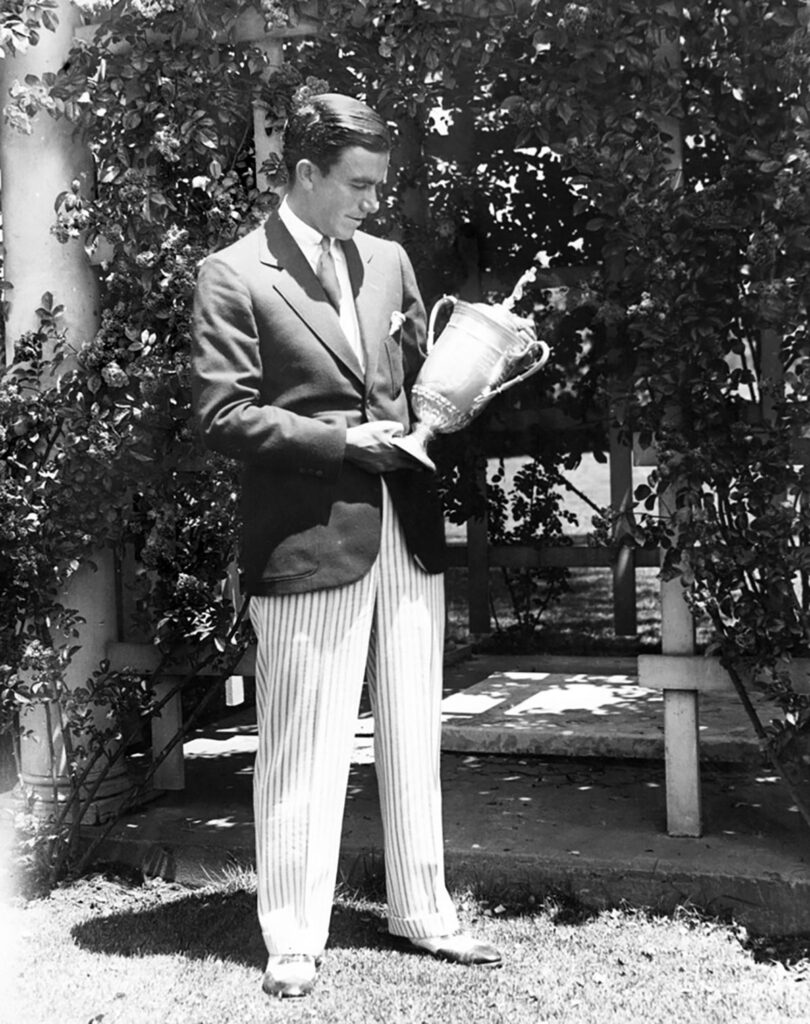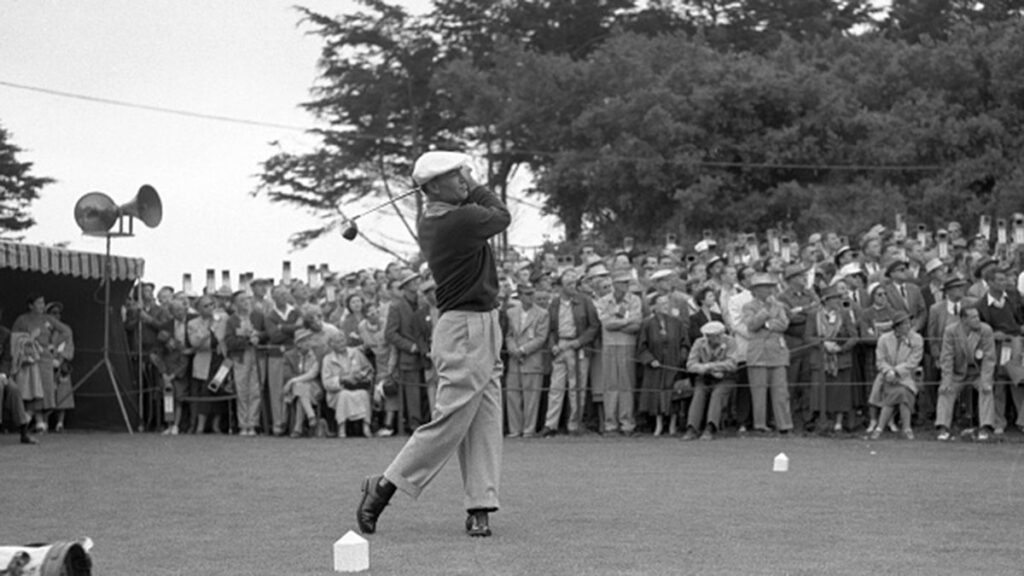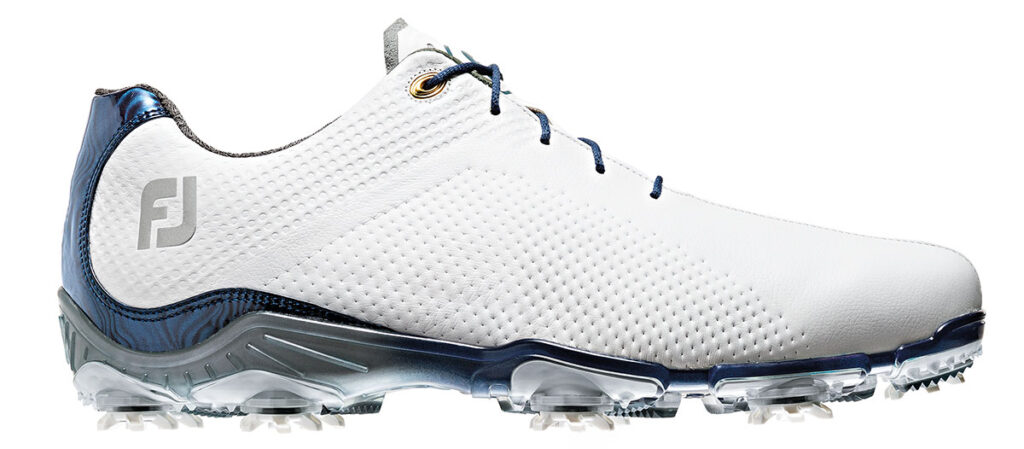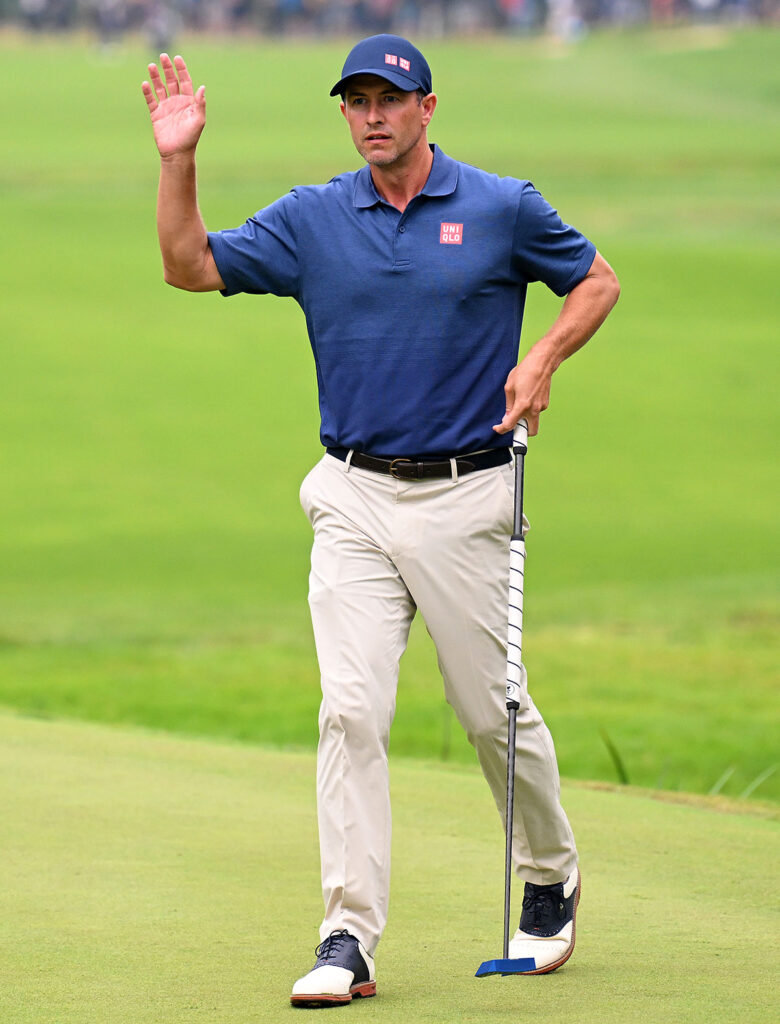Standing the test of time.
FootJoy has a rich history of craftsmanship, performance and innovation. Some of the game’s greatest champions – Ben Hogan, Arnold Palmer, Jack Nicklaus and Tiger Woods, among others – have all worn the famous footwear. Here’s why the iconic brand has lasted the journey… and is primed for 100 more.
The early years
What began with a young man dreaming big has evolved into the most enduring golf brand in the world. FootJoy is the world’s No.1 manufacturer of golf footwear and gloves as well as a leading innovator in clothing and rainwear.
This year marks the 100-year milestone since the first golf shoes were branded FootJoy. During this period FootJoy strode to victory on more than 8,000 occasions at professional tournaments around the world.
Statistically, FootJoy has been the leader in golf footwear for 78 years during which time it’s been the No.1 shoe worn on the PGA Tour every single year since 1945. Today, FootJoy is a brand of Acushnet Company, the equipment giant known for leading brands Titleist (clubs and balls), Vokey (wedges) and Scotty Cameron (putters).

1857
FootJoy’s roots trace back to Brockton, Massachusetts, in 1857 when Frederick Packard left his father’s boot workshop to start his own shoe business. The Burt and Packard Company was one of the first footwear manufacturers to deploy automated stitching machines. Its factory was also one of the first to make ‘left’ and ‘right’ shoes. These initiatives facilitated mass production and provided footwear to Ulysses S. Grant and the Union Army during the American Civil War [above].
1910
Business expanded as Burt and Packard’s reputation grew. The catalyst for expansion into golf came about 1910 with the arrival of Perley Flint, a young Harvard graduate who had a passion for the game. Packard and Flint experimented with golf shoe designs that were lightweight enough to accommodate metal spikes on the soles.
1923
By 1923 the now Field and Flint Company had built a sterling reputation for craftsmanship and manufacturing techniques. However marketing wasn’t its forte. That year it conducted a naming contest to promote an upcoming line of shoes. The winning entry came from a woman in the stitching department who submitted a name that would forever change the world of golf: FootJoy.

1927
A great marketing coup followed in 1927 when the United States team wore FootJoy [above] at the Ryder Cup against Great Britain & Ireland. Apparently, a sales rep pitched FootJoy to American captain Walter Hagen and ‘the father of professional golf’ approved the choice.

1928
FootJoy’s first major victory came the next year when Johnny Farrell [above] defeated Bobby Jones to win the 1928 US Open at Olympia Fields in a 36-hole playoff.

The Classic era of golf (1946-1999)
In the post-WWII era, the FootJoy brand became synonymous with the ‘Classic’ saddle style of shoe. From the traditional white/brown to the red/white/blue shield tip, the FootJoy look became etched in golfers’ minds. At any given tournament, FJ Classics was the footwear of choice for as many as three-quarters of the entire field.
Examples of FootJoy’s distinctive styling included the ‘Semi-Brogue’, a strong Oxford style of shoe with ornamental perforations and wingtips. The ‘Shawl Tongue’ covering shoelaces and eyelets was another feature incorporated into FootJoy shoes.

1950s and 1960s
Professional endorsement was a driving force behind the FootJoy brand. By the mid-1950s the overwhelming majority of leading tournament players wore FootJoy golf shoes. It became known as the ‘Choice Of Champions’ for its perceived comfort, perfect balance for every shot, distinctive styling and rugged wear qualities. With sartorial splendour from the likes of Ben Hogan [above], Sam Snead and Jimmy Demaret, FootJoy left an indelible impression upon America’s 2.5 million active golfers.
Change of ownership
In 1957, the year before Perley Flint’s passing, the Stone and Tarlow families acquired the FootJoy brand when they bought Field and Flint Company. Brothers Bill and Dick Tarlow refocused the business exclusively on golf and consolidated manufacturing operations into a modern factory in Brockton, Massachusetts. Incidentally, Bill Tarlow’s wife created FootJoy’s unique ‘ball and tee’ logo on the kitchen table of the family home. In 1970, the company officially became known as FootJoy, Inc.
1970s and 1980s
After the success of the market-leading PowerStrap shoe, FootJoy entered the golf glove business with the launch of the FJ PowerStrap (1979). The next year it became the first manufacturer to develop a golf glove using water-repelling cabretta leather. The counter-perspiration StaSof glove became the No.1 consumer brand by using influential players in television and media advertising (1983). The all-weather DryJoys revolutionised golf footwear as a waterproof shoe with rugged durability (1989).
1990s
The modern FJ logo was introduced to symbolise the separation of the Titleist and FootJoy brands (1996). FootJoy was the first shoe brand to introduce ‘Soft Spikes’ to golf footwear (1997). FootJoy also launched Classic Dry Premiere, a two-year waterproof welted golf shoe (1999). And the Fast Twist cleat insertion system became standard for all FootJoy’s non-Classic shoes.
Cutting-edge technology (2000-2023)
It’s unlikely any business of substance can survive for any significant length of time without innovation. Facing competition from athletic footwear manufacturers, FootJoy introduced bold new features such as golf shoe customisation (MyJoys), shoelace alternatives (BOA Fit System) and performance spikeless outsoles (ProSL).
2001-2010
The Contour Series became the best-selling golf shoe and once accounted for almost 15 percent of sales in the US market (2001). FootJoy then released the first customisable golf shoes in 2003. MyJoys offered an extensive range of lengths and widths (7XN-17XXW) while customers could order two different shoe sizes. But the real attraction for many golfers was the ability to add their own flair through leather options, colour combinations and personalised insignia. FootJoy became the first golf footwear manufacturer to fasten shoes without traditional laces in 2006. The revolutionary FootJoy ReelFit shoe featured the BOA Lacing System that uses stainless steel wires connected to a turning knob. The ReelFit provided advantages in terms of strength and speed as well as wear and tear.

2010-2020
By the mid-2000s, FootJoy’s design team recognised a shift in purchasing trends. Increasingly, golfers preferred an athletic style of golf shoe. Without sacrificing its classic style and history, FootJoy refocused to meet consumer demand. The launch of the Contour Casual saw it become the top-selling spikeless golf shoe (2012). Then came the real game-changer for golf footwear with the release of D.N.A. (DryJoys Next Advancement), a high-tech premium shoe (2014). D.N.A. featured cutting-edge design with lightweight, waterproof leather uppers, a cushioned fit-bed for heel support and TourLock cleats for superior traction. Narrow, medium and wide options gave golfers more flexibility.

Harking back to the golden days of golf, the FJ Icon brand underwent a makeover with the design of Icon Black for style-conscious golfers with a preference for heritage, craftsmanship and luxury (2015). FootJoy expanded its women’s presence with ‘GolfLeisure’ performance apparel, developing new lines inspired by the athletic/lifestyle trend. Six-time LPGA Tour winner Jessica Korda [above] wears FootJoy head-to-toe as part of her footwear/apparel contract. The launch of FootJoy’s ProSL redefined spikeless golf footwear, generating unprecedented tour adoption to become the most popular selling golf shoe (2016-2017). Along with brands such as Tour-S (2018) and Fury (2019), the hand-crafted FJ 1857 and FJ Flex, FootJoy worldwide sales passed 3.5 million units annually at on-course retailers.

2023 and the next hundred years
With an eye to the future, FootJoy modernised its ‘classics’ line by launching the Premiere Series Collection (2021). Endorsement by the likes of Adam Scott [above], the Premiere Series is worn by more tour professionals than almost all other footwear companies combined. To acknowledge its centenary in 2023, FootJoy went back to the future with the release of Premiere Series Packard. In a tribute to company founder Frederick Packard, these shoes feature hand-selected premium full leather, robust traction and the timeless appeal that has won the approval of Tiger Woods and Dustin Johnson.



